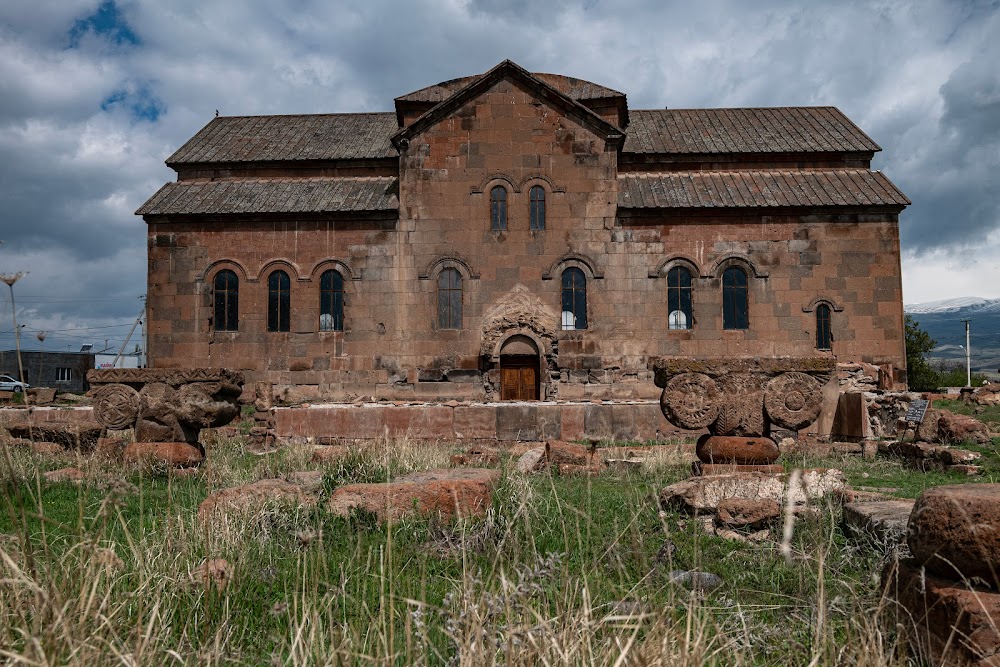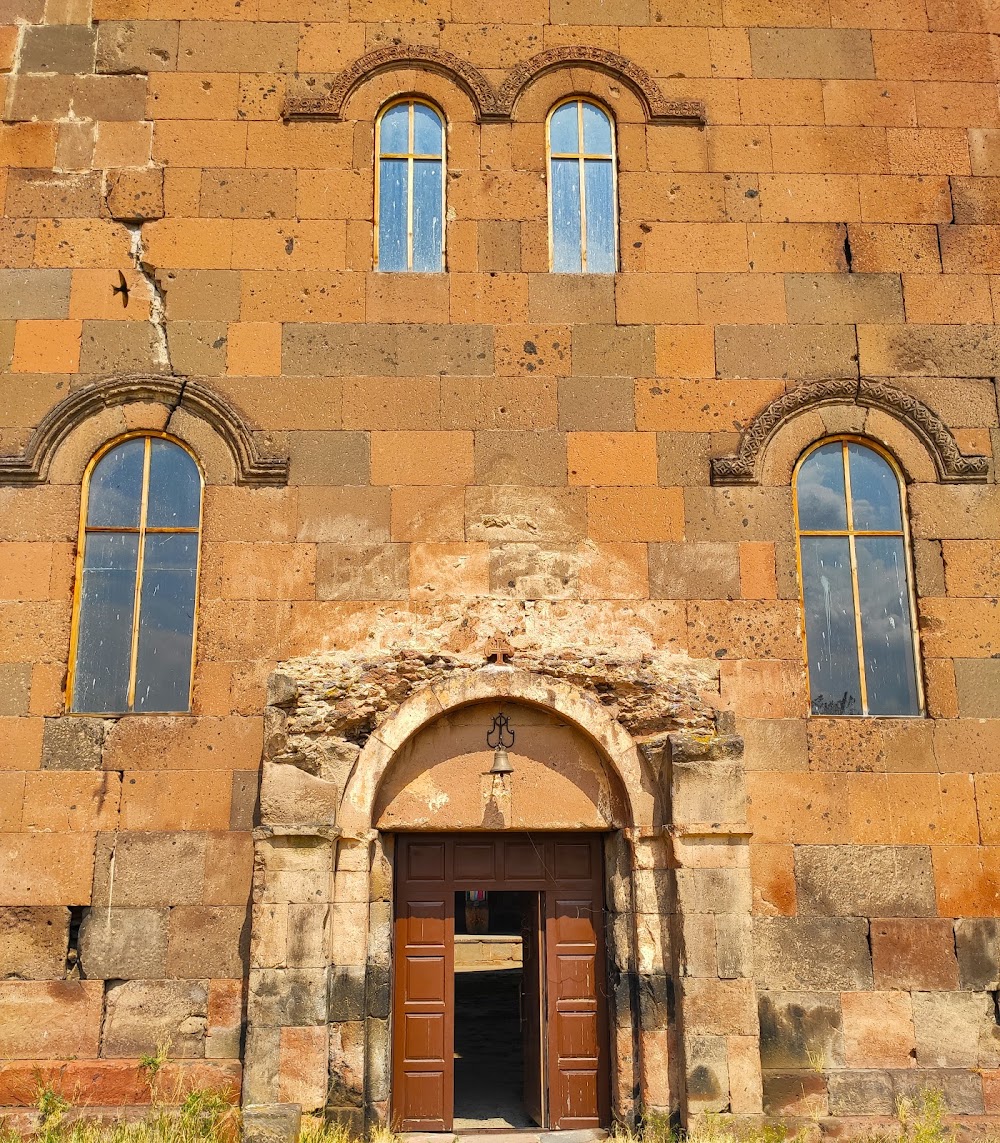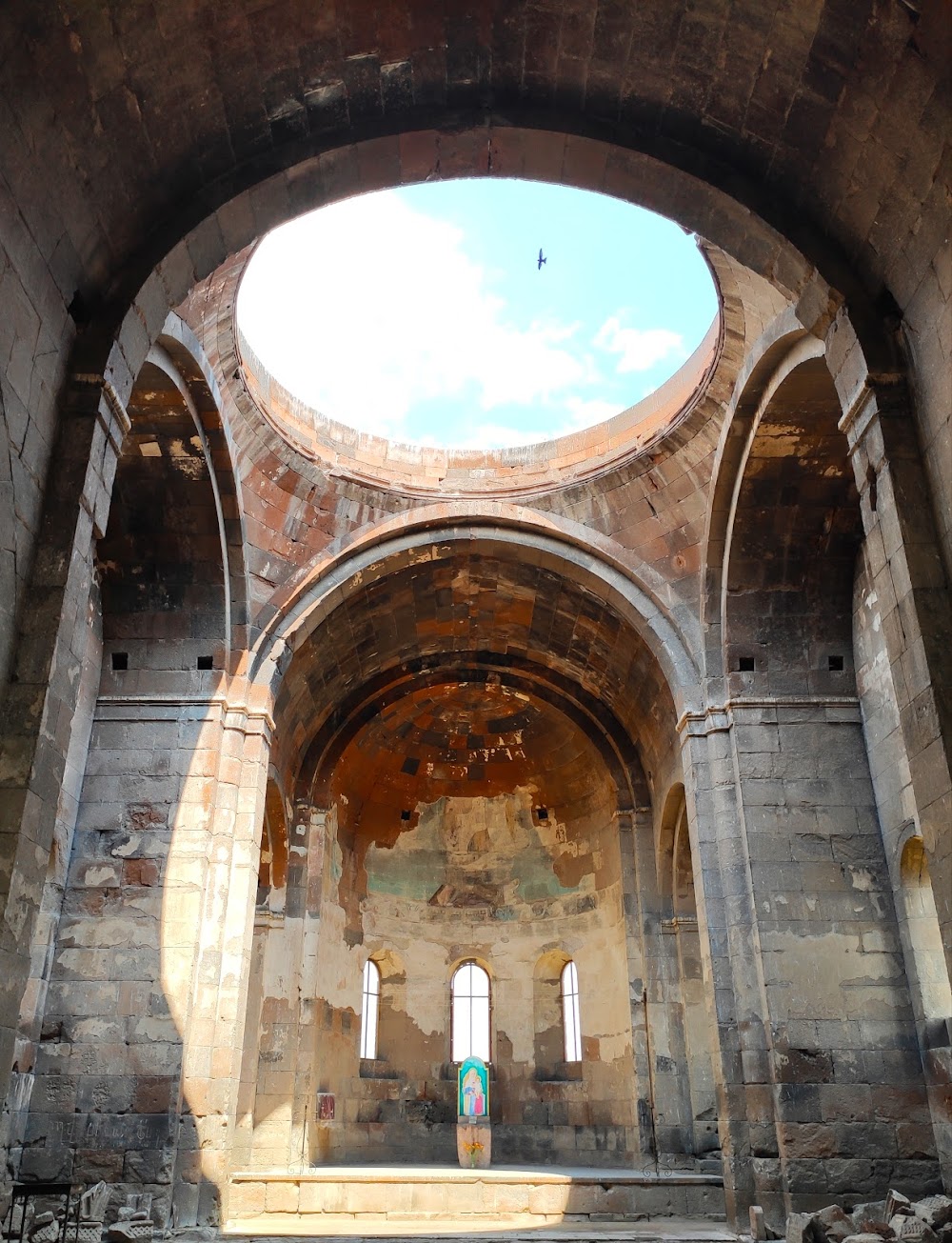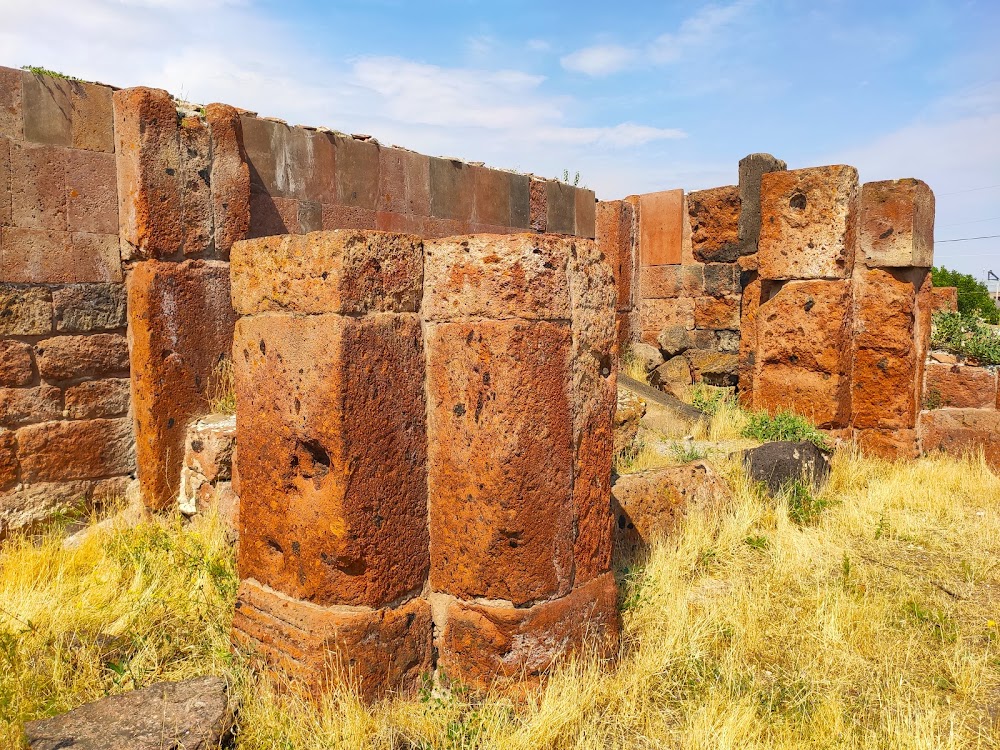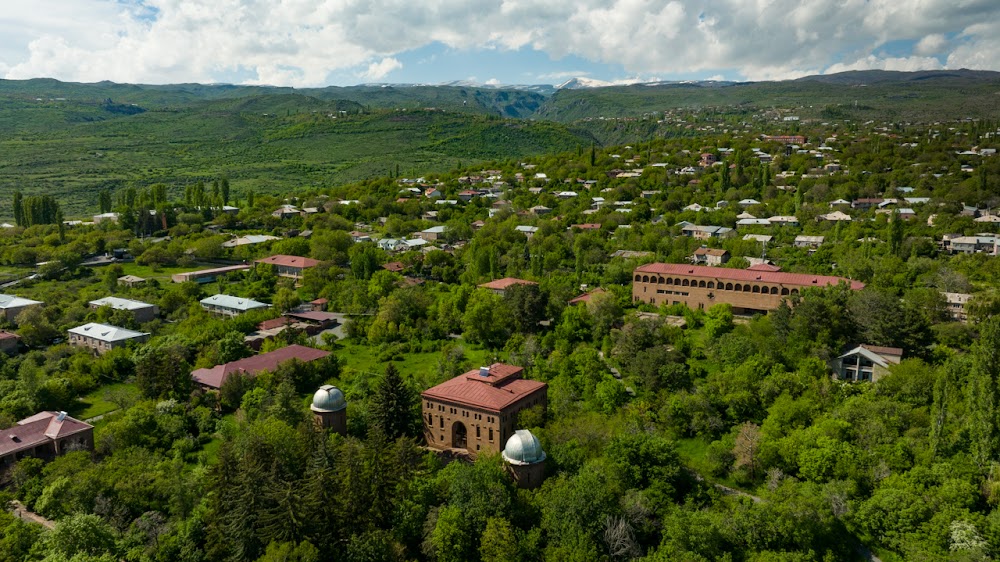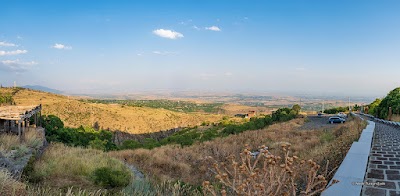Aruchavank (Առուչավանք)
Overview
Saint Grigor Church: A Historical Marvel
Saint Grigor Church, also known as Aruchavank, stands as a magnificent testament to the rich architectural heritage of Armenia, nestled in the picturesque Aragatsotn Region. Built in the 7th century during the reign of Prince Grigor Mamikonian, this stunning structure is dedicated to Saint Gregory the Illuminator, a pivotal figure in Armenian religious history. The church exemplifies the grandeur and ingenuity of medieval Armenian builders, inviting visitors to witness a piece of the past.
The Vision Behind Aruchavank
The construction of Aruchavank began under the leadership of Prince Grigor Mamikonian, a key figure in Armenia's historical narrative. The church was envisioned as part of a larger complex that included a palace, workshops, and various auxiliary buildings. Strategically located in Aruch, the site served as an important hub for trade and political activities, making it a fitting choice for such a monumental structure.
Architectural Features
Aruchavank is distinguished by its basilica style, which was prevalent in Armenian ecclesiastical architecture during its time. The church features three naves separated by two rows of impressive columns. Originally, a grand dome rose above the central space, supported by four massive pillars. While the dome has unfortunately succumbed to the ravages of time, the remaining pillars and arches continue to evoke the church’s former magnificence.
Building Materials and Techniques
The artisans of Aruchavank meticulously sourced building materials, primarily using large, well-cut tuff stones that are abundant in the region. These stones not only contribute to the church's durability but also reflect the high level of craftsmanship prevalent in the 7th century. Skilled local craftsmen employed advanced masonry techniques, ensuring that each stone fit together seamlessly, showcasing their dedication to quality and precision.
Artistry and Decoration
Inside the church, the walls were originally adorned with vibrant frescoes, fragments of which still provide glimpses into the artistic legacy of the time. These religious depictions contributed to the church's spiritual ambiance, while intricate carvings on the pillars and walls highlighted the devotion and skill of the artisans. Each detail serves as a reminder of the deep cultural and religious significance embedded within the structure.
The Endurance of Aruchavank
Throughout the centuries, Aruchavank has weathered numerous challenges, including devastating earthquakes. Yet, thanks to the robust construction techniques employed by its builders, significant portions of the church have remained intact. Modern restoration efforts focus on preserving what remains and stabilizing the structure, ensuring that future generations can appreciate and study this remarkable site.
A Testament to Armenian Heritage
Today, Aruchavank is not only a historical landmark but also a symbol of the resilience and spirit of the Armenian people. Visitors can explore the architectural beauty of the church while contemplating the profound legacy of those who conceived and constructed it. The site serves as a vibrant reminder of Armenia's rich ecclesiastical heritage.
Conclusion
In summary, Saint Grigor Church in Aruch offers a captivating glimpse into medieval Armenian culture, characterized by its deep historical roots and architectural splendor. From the careful selection of building materials to the intricate designs adorning its walls, Aruchavank reflects a society deeply committed to faith and craftsmanship. It remains an enduring symbol of Armenian resilience and devotion, inviting all who visit to connect with its storied past.


